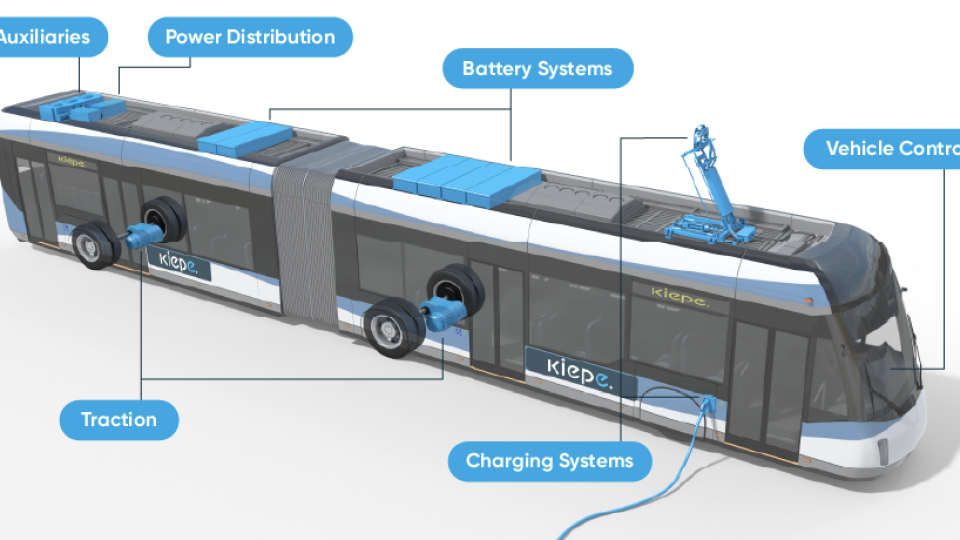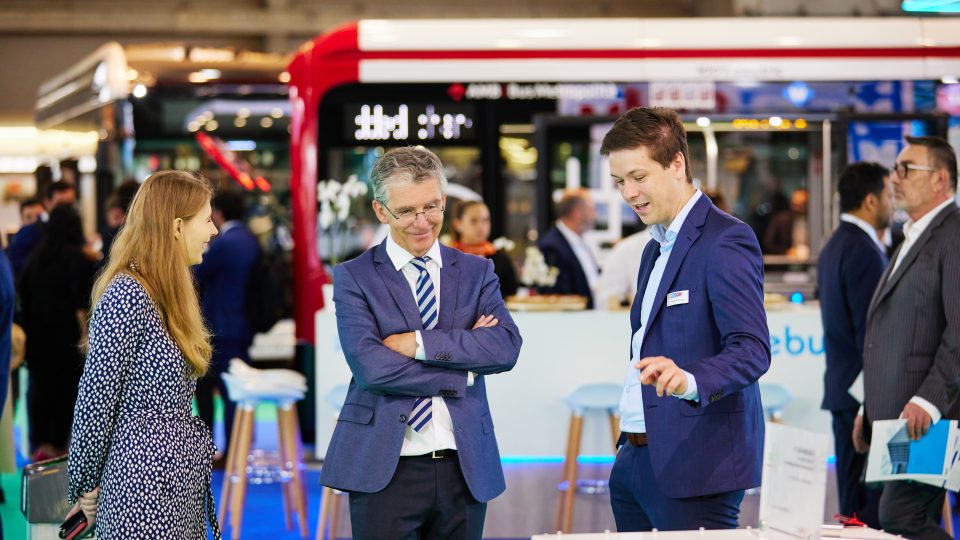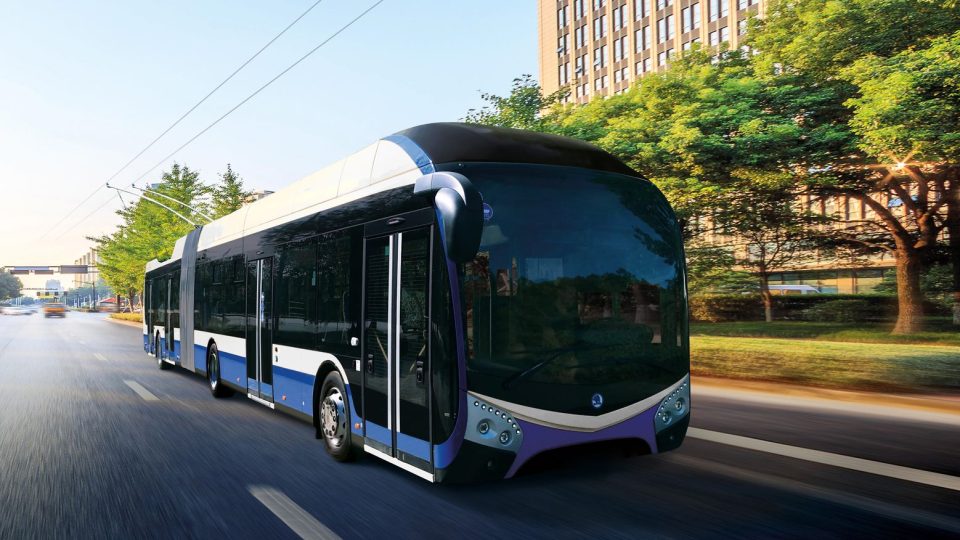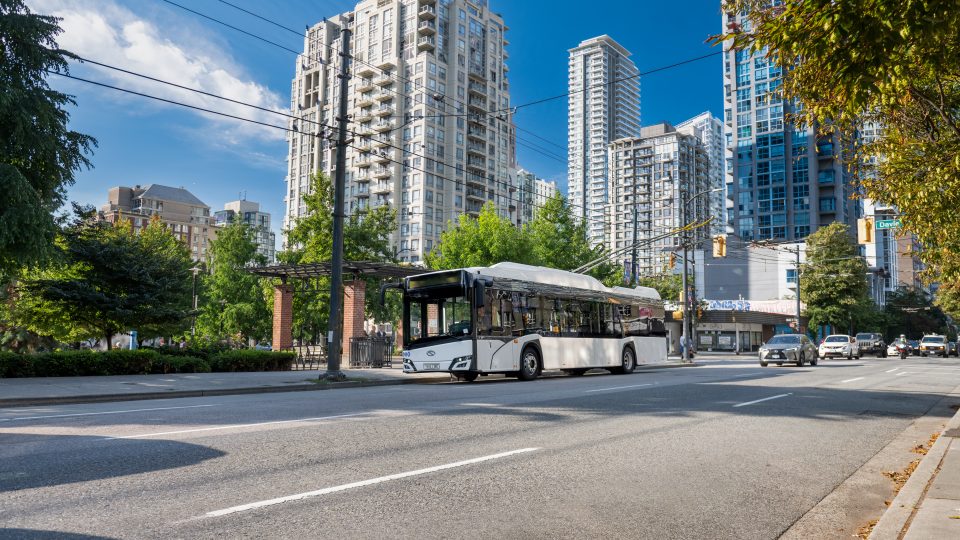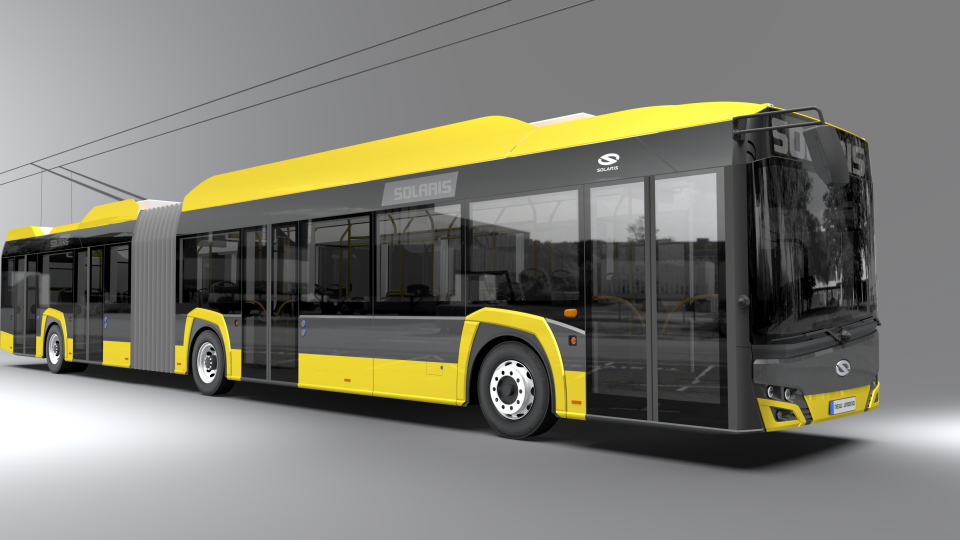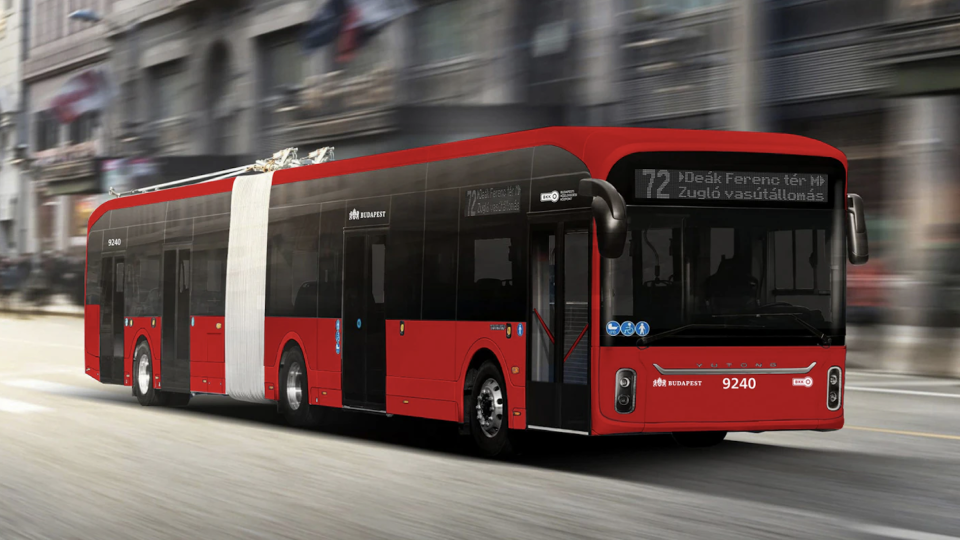A giant in Berlin: the new Urbaliner Flexity tram by Alstom
BVG in Berlin confirms itself as an increasingly customer-oriented company, and thanks to the monitoring of passenger flows and the network has in its continuous improvement measures to ensure increasingly comfortable and reliable travel and to convince more and more Berlin citizens to switch from private to public transport. BVG now operates 22 tram lines, […]
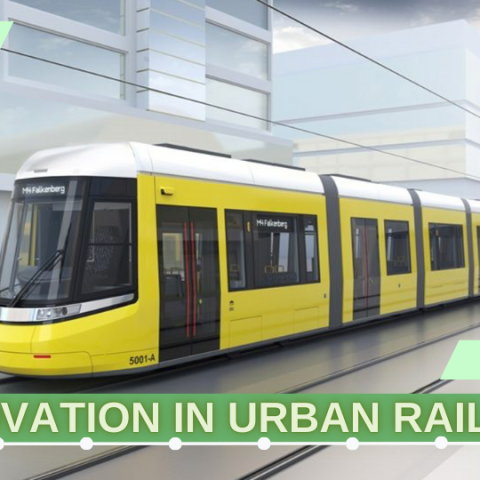
BVG in Berlin confirms itself as an increasingly customer-oriented company, and thanks to the monitoring of passenger flows and the network has in its continuous improvement measures to ensure increasingly comfortable and reliable travel and to convince more and more Berlin citizens to switch from private to public transport. BVG now operates 22 tram lines, of which 9 are Metrotram lines, lines with frequent passing and operating 24 hours a day.
More length, more space, and energy savings: these are the characteristics of the modern Berlin tram, and what Alstom is showing seems to fully meet expectations. After the mock-up presented in 2021, it is now the turn of the real vehicle: on 3 July 2024, Alstom presented the new Urbanliner Flexity tram to the Board of Directors of BVG in Berlin. With its nine modules and 50.89 metres in length and 2.40 metres in width, it is the longest tram ever built for the German city.
The giant was ordered by BVG in 20 units according to the framework agreement of 15 December 2020 with Bombardier (later merged into Alstom), which provides for the purchase of up to 117 new Flexity trams. The prototype is scheduled to be put into service in early 2025, while the series vehicles are scheduled to be delivered by 2026.
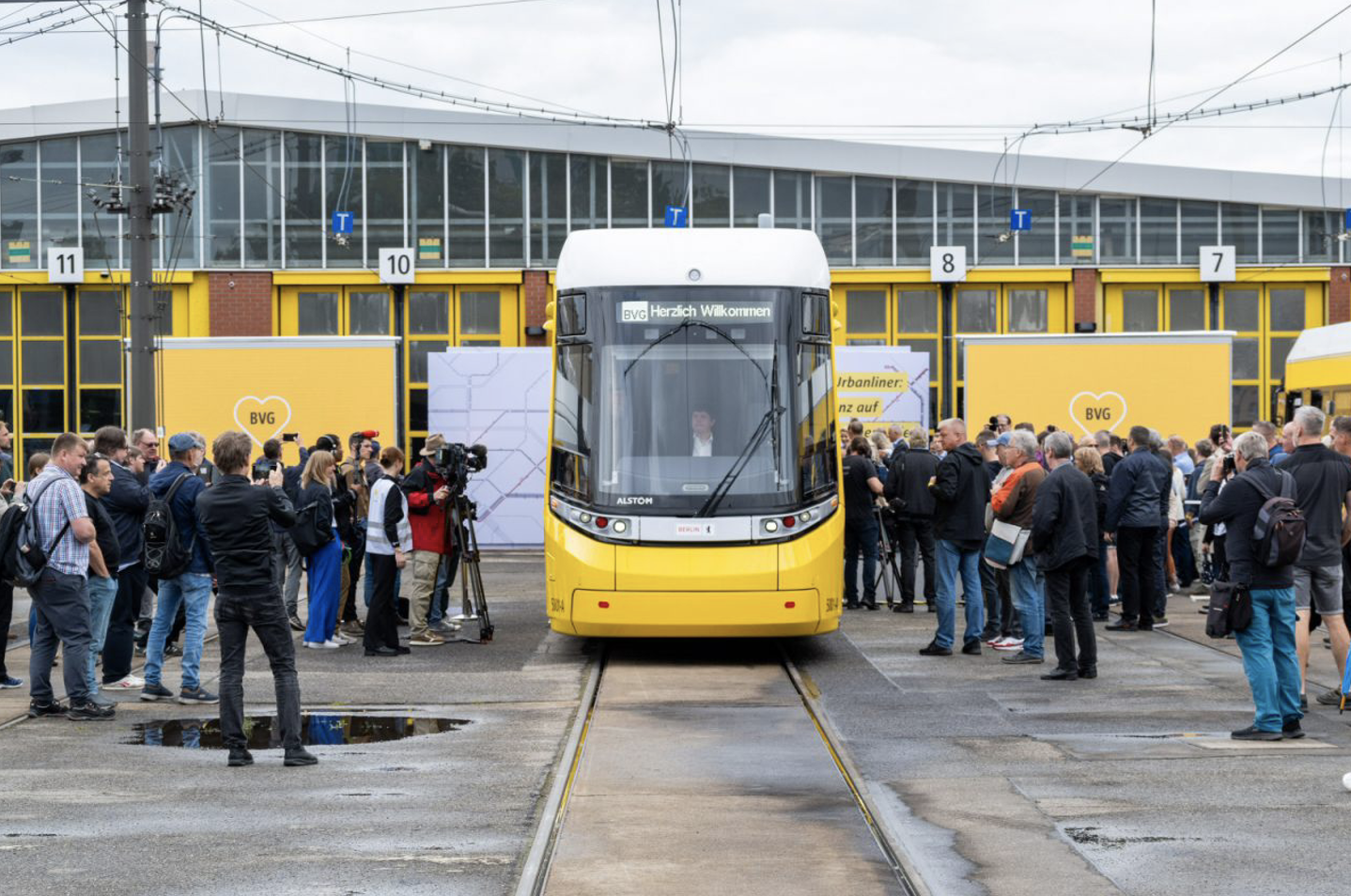
Alstom, the Urbanliner Flexity tram for BVG Berlin
The first example has been running for the past few weeks on the manufacturer’s test track in Bautzen, Saxony, where the production vehicles are being built; and delivery to BVG is planned by the summer. It is planned to run on the M4 line (Hackescher Markt-Falkenberg or Zingster Straße, a diversion with three stops), one of the strongest lines in the Berlin network, with a 37-minute journey time. The service runs 24 hours, with crossings every 3-4 minutes at peak hours, every 6-7 minutes from 5.30 to 8.30 and from 19.30 to 0.30, then every 30 minutes. The M4 line is already equipped with long platforms, designed to accommodate two trams in multiple control given the increased demand for transport on the line, which now stands at around 100,000 passengers/day per direction. In fact, most of the platforms on the Berlin network can already accommodate trams up to 60 metres long today, which could be the next step required by BVG.
The Berlin model is one of the longest trams in the world; unveiled at the BVG depot in Lichtenberg, the vehicle can accommodate 312 passengers, 92 of whom are seated; there will be multifunctional spaces for disabled people, bicycles and wheelchairs. Thanks to a study of the interior layout, the vehicles appear to be wider and more spacious than those in service today. The vehicle is accessed via six double doors on each side, meaning that six out of nine modules are equipped with doors.
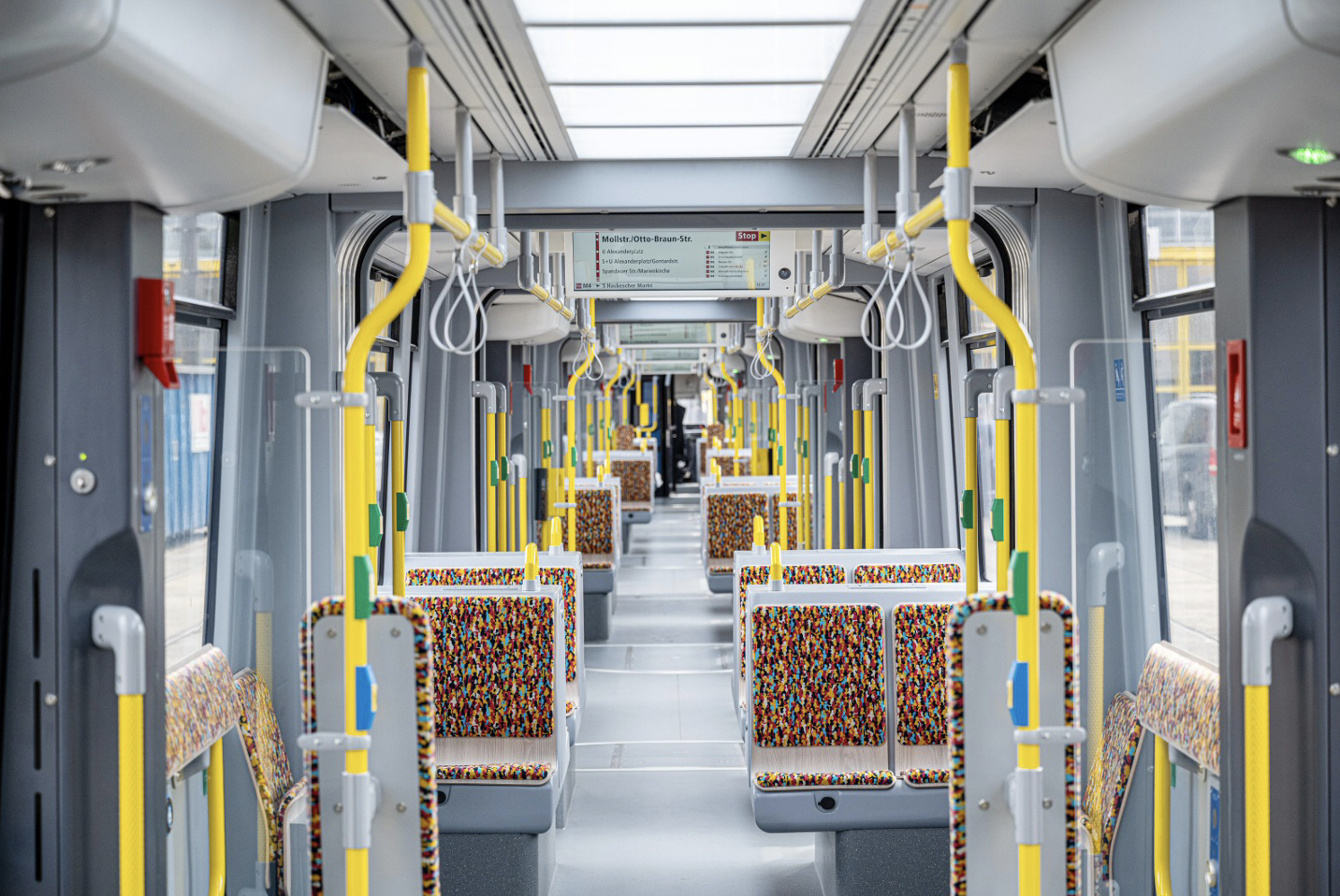
The floor is entirely lowered; a study of the trolleys allowed the removal of the last barriers near the joints and less aggression towards the track. Seats at different heights have been installed to make it even easier for persons with motor disabilities to travel. The livery is yellow, which characterises all BVG vehicles; the interior also features some yellow elements, such as the handrails.
The interior lighting is automatically adjusted according to daylight; the seats are even more comfortable, with greater spacing; the positioning is taken care of so that all seated passengers can benefit from maximum visibility and there are no seats sacrificed by the uprights.
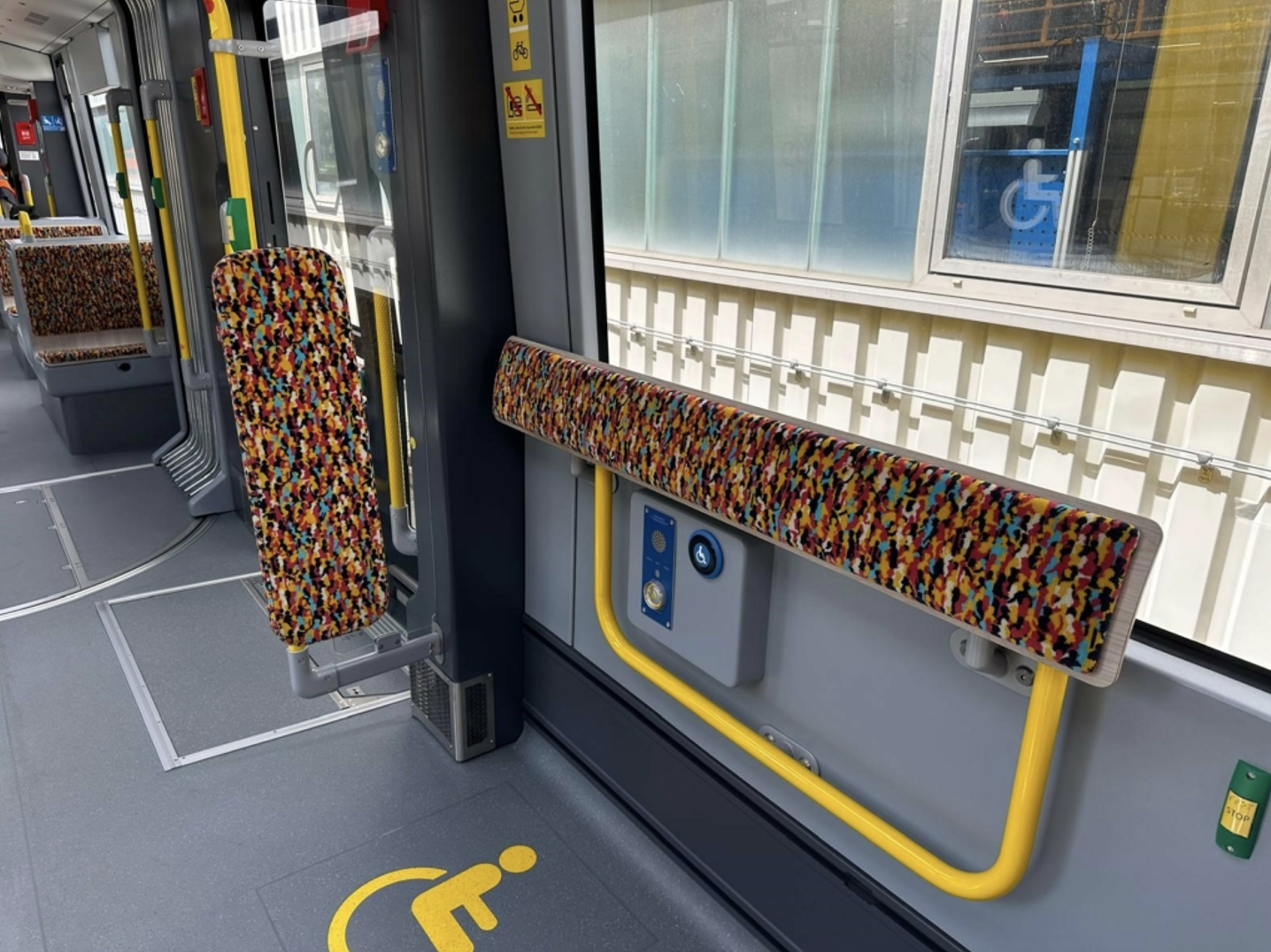
Communication has also been taken care of: large multifunctional screens, practically distributed on almost every module, will provide passengers with as much information as possible in real time. The ergonomics of the driver’s cab have been improved and the driver will have, among other things, cameras in place of mirrors. The tram is driven by 16 asynchronous motors, 55 kW of power each, for a total of 880 kW. There will be four traction bogies.
Flexity is already present in Berlin: Bombardier Transportation, (later Alstom) has delivered a total of 231 low-floor Flexity trams to BVG between 2008 and 2022, in five-module 30-metre-long and seven-module 40-metre-long versions. The technology was still similar to that of the Adtranz Incentro, developed in the late 1990s and early 2000s, the time had come for a technical and aesthetic upgrade, in practice a generation of Flexity trams; indeed, the prototype presented boasts a series of mechanical and electrical innovations aimed above all at lower environmental impact and energy savings. .


